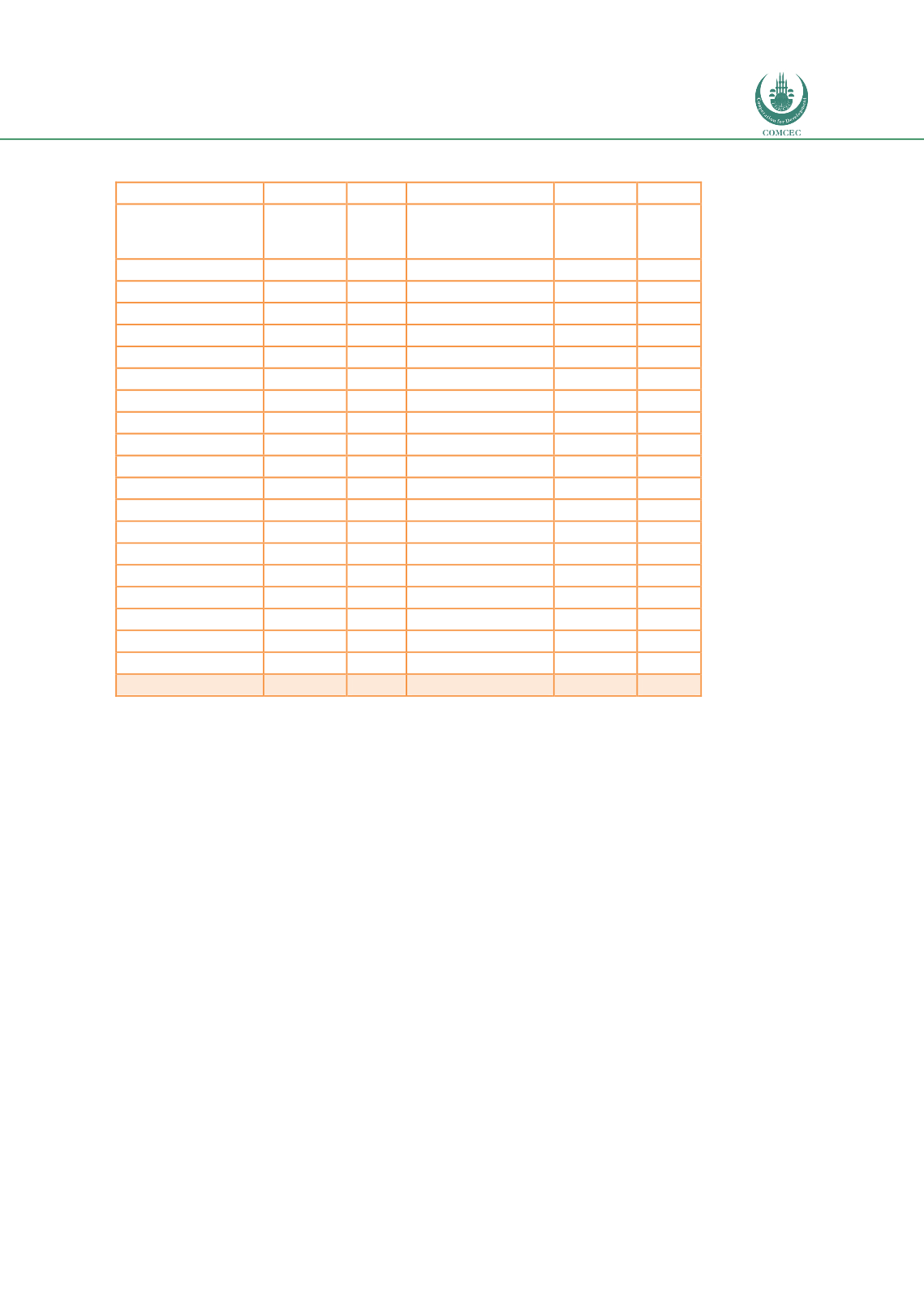

Improving Transnational Transport Corridors
In the OIC Member Countries: Concepts and Cases
79
Table 13: International trade of Azerbaijan in weight and value (2016)
Commodities
Export
Commodities
Import
Quantity,
kton
Value,
MUSD
Quantity,
kton
Value,
MUSD
Crude oil
20,901
6,504
Products
1,322
Oil products
1,541
409
Meat
33
38
Natural gas
6,754
970
Milk
5
8
Electric products
646
28
Butter
14
48
Fruits & vegetables
378
372
Fruits
317
135
Tea
1
6
Tea
13
44
Vegetable oil
16
17
Wheat
1,600
295
Sugar
108
62
Vegetable oil
154
144
Alcohol
18
Sugar
365
152
Chemical products
276
55
Tobacco
153
Plastics
1,445
98
Cement
376
18
Cotton
9
18
Pharmaceutics
10
196
Metals
223
96
Plastic
152
281
Aluminum
66
98
Textiles
189
Others
386
Metals
853
1,118
Electric products
2,013
Vehicles
152
813
Furniture
111
Others
2,314
Total
32,364
9,137
Total
4,044
9,392
Source: TRACECA.
The TRACECA member states can be divided in three groups: 1) west and north of the Black
Sea, 2) south of and between the Black Sea and Caspian Sea, and 3) east of the Caspian Sea.
Openness Index
is an economic metric calculated as the ratio of country’s total trade (the sum
of exports plus imports) to the country’s GDP. The higher the index the larger the influence of
trade on domestic activities. It is a measure of the extent the which the economy trades with
the outside world and that is important for an assessment of the relevance of an international
transport corridor. The trade openness of the member states, defined as being the value of
trade compared to GDP, differs between the three groups with a tendency of successively
decreasing openness towards the east. Outliers are Azerbaijan in group 2 with comparatively
low openness, Tajikistan with a rather high and the Kyrgyz Republic with a very high openness
compared to the rest of group 3 as visible from
Table 14.In this table, Turkmenistan is
included for better comparison even though it is not member of TRACECA.
















